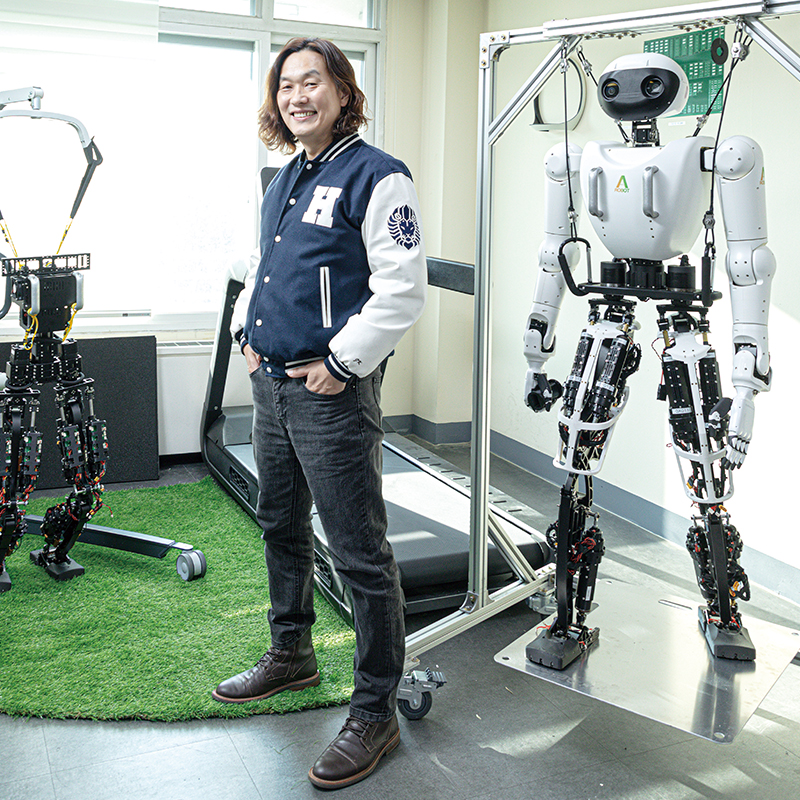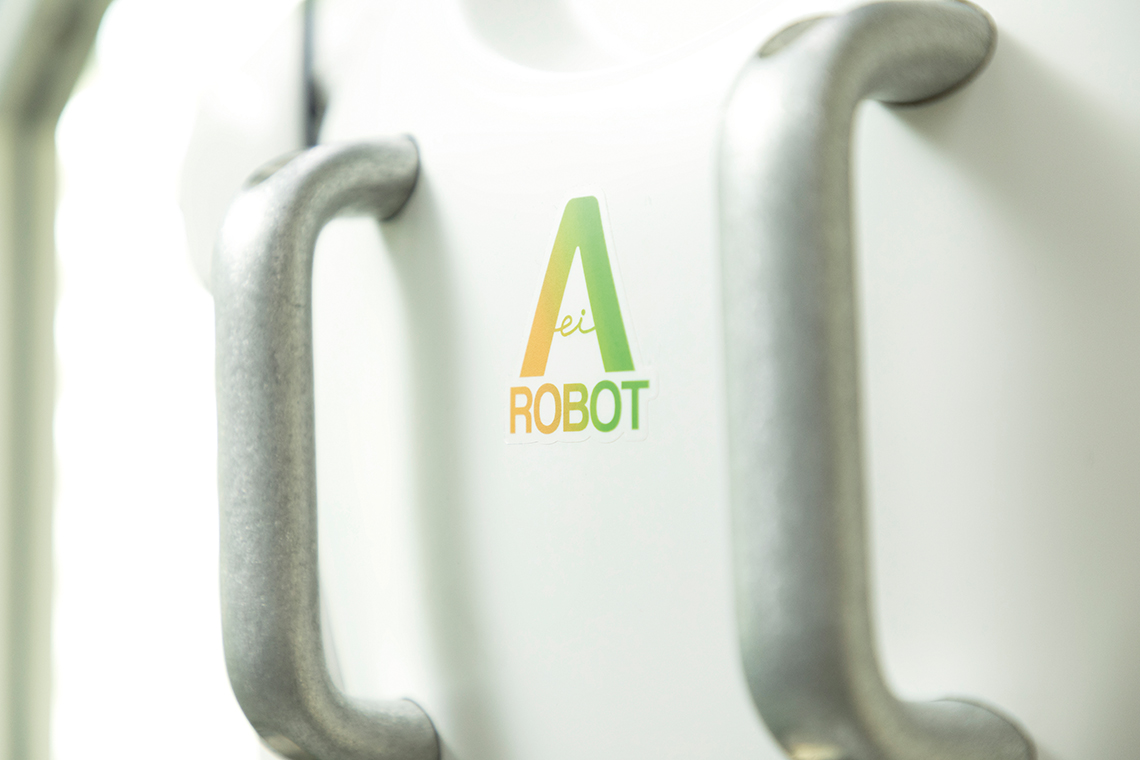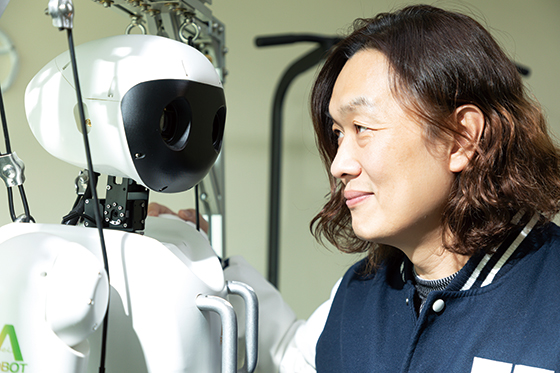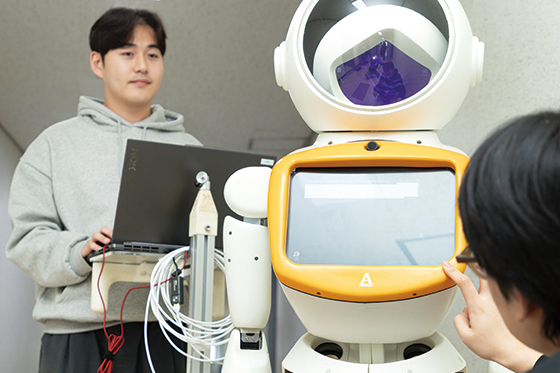THEME ➁
Robots Changing the World
People who are Prepared Will Usher in a New Era
Professor Jeakweon Han
Department of Robotics
With the fusion of AI and semiconductors, massive capital is being invested in the humanoid robot industry, which holds infinite potential. There is already intense competition among global big-tech companies to dominate the market. We met with Professor Jeakweon Han, the CTO of the humanoid robot company, A Robot, to learn about the changes in the world that the commercialization of humanoid robots will bring, and to discuss ERICA’s competitive role in this field.
- Written by · Yeong-im Park
- Photo by · Hyeon-gu Lee

Humanoid Robot Commercialization Nearing
“Humanoid robots will be the ‘next smartphone.’ Just as it is hard to imagine living in a world without smartphones, today's children will soon ask, ‘How did you live without robots in the past?’”
The future that Prof. Han imagines is a world where every household owns at least one humanoid robot. According to various reports, this exciting future may not be far from reality. Morgan Stanley predicts that humanoid robots will be introduced faster than self-driving cars, and robots for personal and household use, such as personal care and security, could be introduced as early as 2028.
Robots can be broadly classified into industrial robots and service robots, depending on their use. Manufacturing robots used in factories and general service robots, like serving and guiding robots, are already widespread. However, humanoid robots, which are designed to mimic the human body structure and are multipurpose, have yet to be mass-produced. While they have made surprising appearances occasionally, there are many challenges to overcome before they can be used in everyday life.
“In 2000, Honda in Japan introduced the world's first bipedal humanoid robot “Asimo”. People were excited to see it walking on two legs. However, humanoid robots are technology-intensive and are the highest-level robots, which is why they have not yet been commercialized after 20 years. In 2024 however, technology has advanced and prices have started to drop, thus speeding up the process.”
 A Robot, where Prof. Han is the CTO, raised KRW 3.5 billion in seed funding within six years since its establishment.
A Robot, where Prof. Han is the CTO, raised KRW 3.5 billion in seed funding within six years since its establishment.
Empowered by Generative AI
Generative AI is what has sparked the commercialization of humanoid robots. These robots are designed to perform many different functions but until now, every task needed to be programmed manually. As a result, the idea of a “do-it-all” robot seemed a distant dream. However, with the rapid growth of generative AI, the commercialization of humanoid robots has now become a real possibility. By equipping robots with generative AI, they can learn and make decisions on their own, thereby helping them adapt to different situations, just like humans.
“In 2021, Elon Musk of Tesla showed strong interest in humanoid robots, Leading to increased market excitement. Tesla began unveiling its humanoid robot “Optimus” in 2022 and it has already reached its third generation.”
Furthermore, Elon Musk announced that starting next year, Tesla plans to deploy over 1,000 robots in its factories. But it is not just Tesla. Jeff Bezos of Amazon, as well as Microsoft, Nvidia, and OpenAI are also investing in a humanoid robot startup called “FigureAI”, indicating that robots are becoming a key focus of the “next big tech” under the second Trump administration.
This trend is also being seen in Korea. The government designates industries that impact the nation's economic security as “national strategic technologies” and the robot industry may soon be added to this list. In late October, A Robot, a humanoid robot company, held a demonstration of its 4th-generation robot “Alice” at the ERICA Business Incubator, attracting much attention from government officials and investors, including 1st Vice Minister Sung-taik Park of the Ministry of Trade. A Robot is a spin-off of Prof. Han's lab of 2018, and he is currently the company's CTO. In May, the company raised KRW 3.5 billion in seed funding six years since its establishment.
“I've been studying humanoid robots for the past 20 years, but this year's response is the strongest I've ever seen. People's views on humanoid robots have completely changed. There has been much more investment this year and I can feel the industry's growing interest. It's unusual that companies are leading this research rather than academia. Big global tech companies are speeding up their research and development.”
 Prof. Han's team is working on research with a sense of responsibility, foreseeing the impact that humanoid robots will have on society.
Prof. Han's team is working on research with a sense of responsibility, foreseeing the impact that humanoid robots will have on society.
Intense Competition for Robot Dominance
A Robot’s “Alice” has been participating in the RoboCup humanoid league, the world's most prestigious robotics competition, and has been performing very well every year. It was a runner-up in 2022 and 2023, and took third place in 2024 but won the technical challenge for completing specific tasks.
“Competing in the RoboCup is a great opportunity to improve both the AI and mobility aspects of our research. A robot excelling in soccer shows that it can perform tasks effectively.”
Alice has been competing and performing well against the best humanoid robots in the world, proving that the company has achieved global-level technology. In fact, very few countries can mass-produce humanoid robots for the global market.
“Currently, the U.S. is leading with China closely following. Since humanoid robots are used for many different tasks and will bring about new innovation, they will have a huge impact on society, similar to the impact smartphones have had. This will change the world once again. That's why everyone is paying attention. Korea cannot fall behind in technological leadership. In fact, our research team is the only one in the country so we're working with a sense of responsibility.”
A Robot, which unveiled its 4th and the latest generation Alice, aims to have it working in industrial settings by 2025. To achieve this goal, A Robot is expanding its research and development workforce and speeding up the process. Prof. Han invites young people to think about what they can do with humanoid robots. He said,
“Young people need to lead the world of the future. When the Internet and smartphones were released, those who saw and led the changes have shaped today's world. The same thing will happen again. People like me, who make robots, are just laying the foundation. It will be the young who will decide how robots are used in the future and they will create new industries and become the new leaders.”







